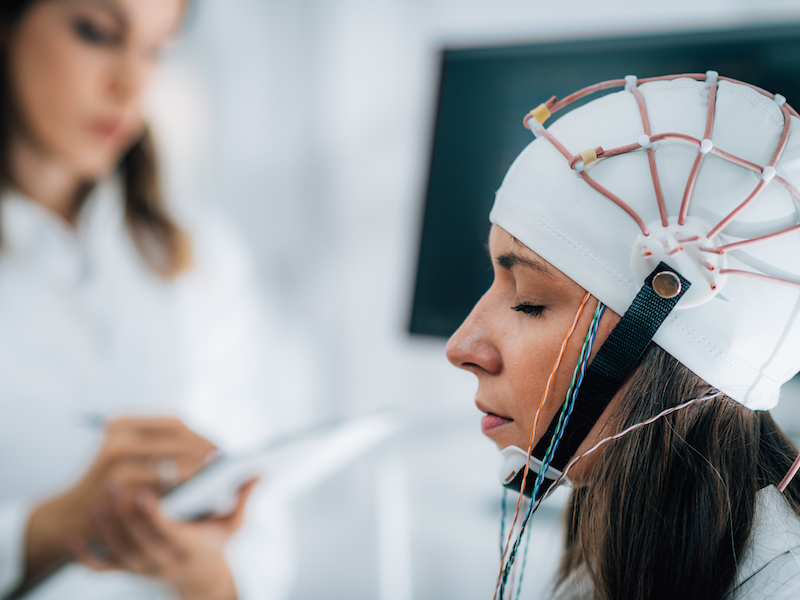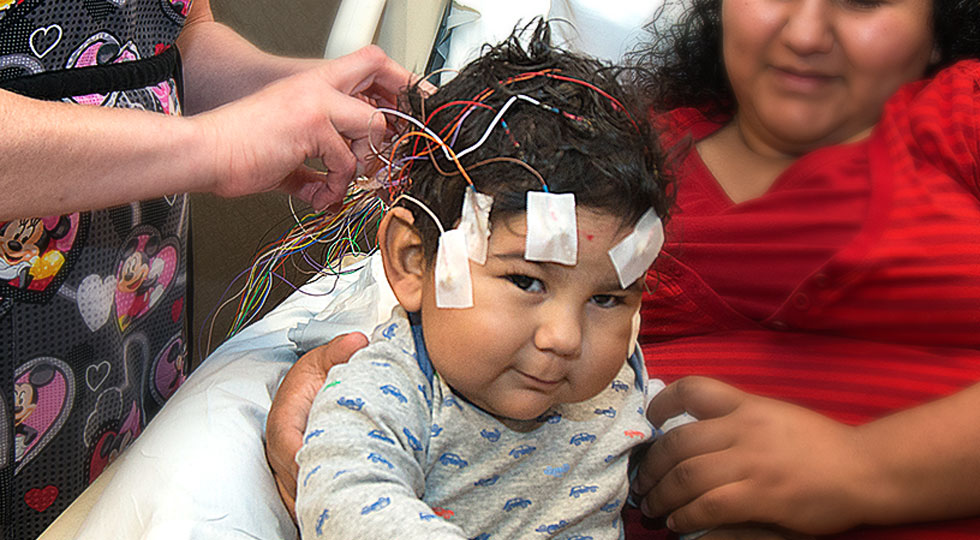

This will make it easier to change clothes when you get home.
Wear a shirt that zips or buttons in front. Bring a cap or scarf to cover your head when you leave (if you wish). Remove hairpieces or unbraid hair before the test. Plan to be in the office for up to two hours. At the end of the test, electrodes will be removed and the paste wiped off. It is very important to write the date, time and a brief description of unusual events or symptoms. You will receive a log to write down anything unusual that occurs during the test. The test begins as soon as you leave and lasts until the disks are removed. You will receive instructions about what you should and should not do during the test. You may wear a cap or a scarf over this to cover it up. The technologist will wrap gauze around your head to cover the wires and disks. Wear the pack around your waist or over your shoulder. This weighs about three pounds and is carried in a pack. Wires connect the disks with a small computer that you will take home. During an ambulatory EEG, the technologist will put small metal disks on your scalp, held in place by adhesive. Ambulatory EEGĪn ambulatory EEG may take one to four days, depending on how much information your physician needs. At the end of the test, the electrodes will be removed and the paste wiped off.Ī routine EEG lasts about 60 to 90 minutes. The technologist may ask you to take deep breaths and show you flashing lights. There are two parts to the test, the nerve conduction study and the. This makes sure that the machine only picks up brain waves and not other movement. It tests the condition of the nerves from the spine into the extremity to the foot or hand. When the test starts, you will need to keep very still and keep your eyes closed. Small metal disks (electrodes) will be placed on your head using a creamy paste to keep them in place. The technologist will ask about your medical history, measure your head and clean your scalp. Routine EEGĭuring a routine EEG, you can lie down on a comfortable bed. A routine EEG typically lasts 60 to 90 minutes an ambulatory EEG can last up to four days depending on how much information your physician needs. The EEG can also show where in the brain these changes occur. Brain activity may change with certain conditions or after an injury. An EEG is a test that records brain activity. It can also help in planning your treatment. They will tell you why the EEG is being done, what it shows, and what it means.The EEG helps your physician diagnose your condition. You must talk to the doctor looking after your baby. An EEG does not tell us anything about the baby’s intelligence or ability to learn. It may also say if there is a risk of the baby having fits in the future. The final result for an EEG is not usually available for a few days because the doctors who check the EEG results have to look at it in detail although sometimes they are able to tell us something right away.Īn EEG will tell us if the electrical activity appears normal or abnormal. Your baby may need to be fed while away for the EEG, so the mother or some formula may need to accompany the baby. There can be quite a long wait, so we suggest you take a book or something to do. You may go with your baby and the nurse to the EEG department. 
The most common reason for doing an EEG is when a baby is having or has had fits. We do an EEG when a baby has a problem, or may need a check up or followup test and we believe that an EEG might tell us something we can’t find out from other tests or examinations. There is no risk to the baby in having this test. At some time in the examination a flashing light may be used to see if this changes the activity of the brain. Some babies are given a sedative before the tests so they are more settled. The EEG usually takes about half an hour. The wires are connected to a machine which reads the electrical activity of the brain.
EEG TEST SERIES
A series of wires are glued to the baby’s head.
/eeg-601235088-5a524fdef1300a0037eeebe5.jpg)
How is an EEG done?ĮEGs are done at Auckland City Hospital. A fit, seizure or convulsion is abnormal electrical activity in the brain which causes unusual movements or a loss of consciousness. Your doctor will tell you if your baby is having an EEG because of fits.

The EEG is most useful at telling us if there is a tendency to have fits or seizures. By looking at the EEG we can get some idea of how the brain is working. What is an EEG?Īn EEG is a test of electrical activity of the brain. Please ask the nurses or doctors caring for your baby if you have any questions or concerns about the test. If your baby has been recommended to have an EEG you will be provided with an explanation as to why this test is important.




/eeg-601235088-5a524fdef1300a0037eeebe5.jpg)



 0 kommentar(er)
0 kommentar(er)
